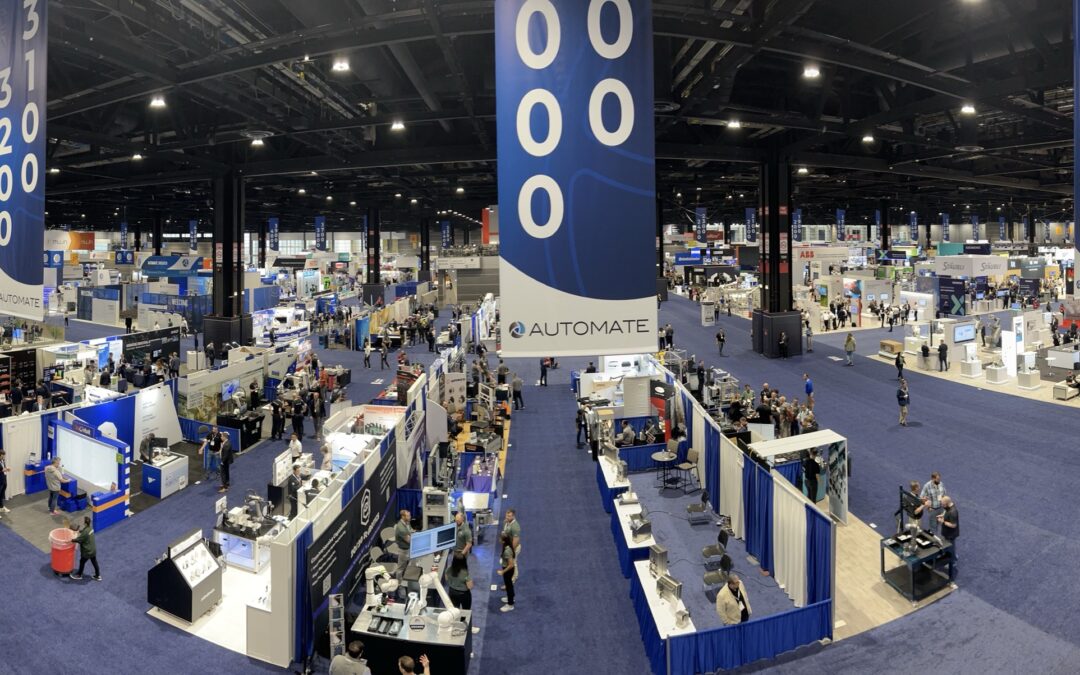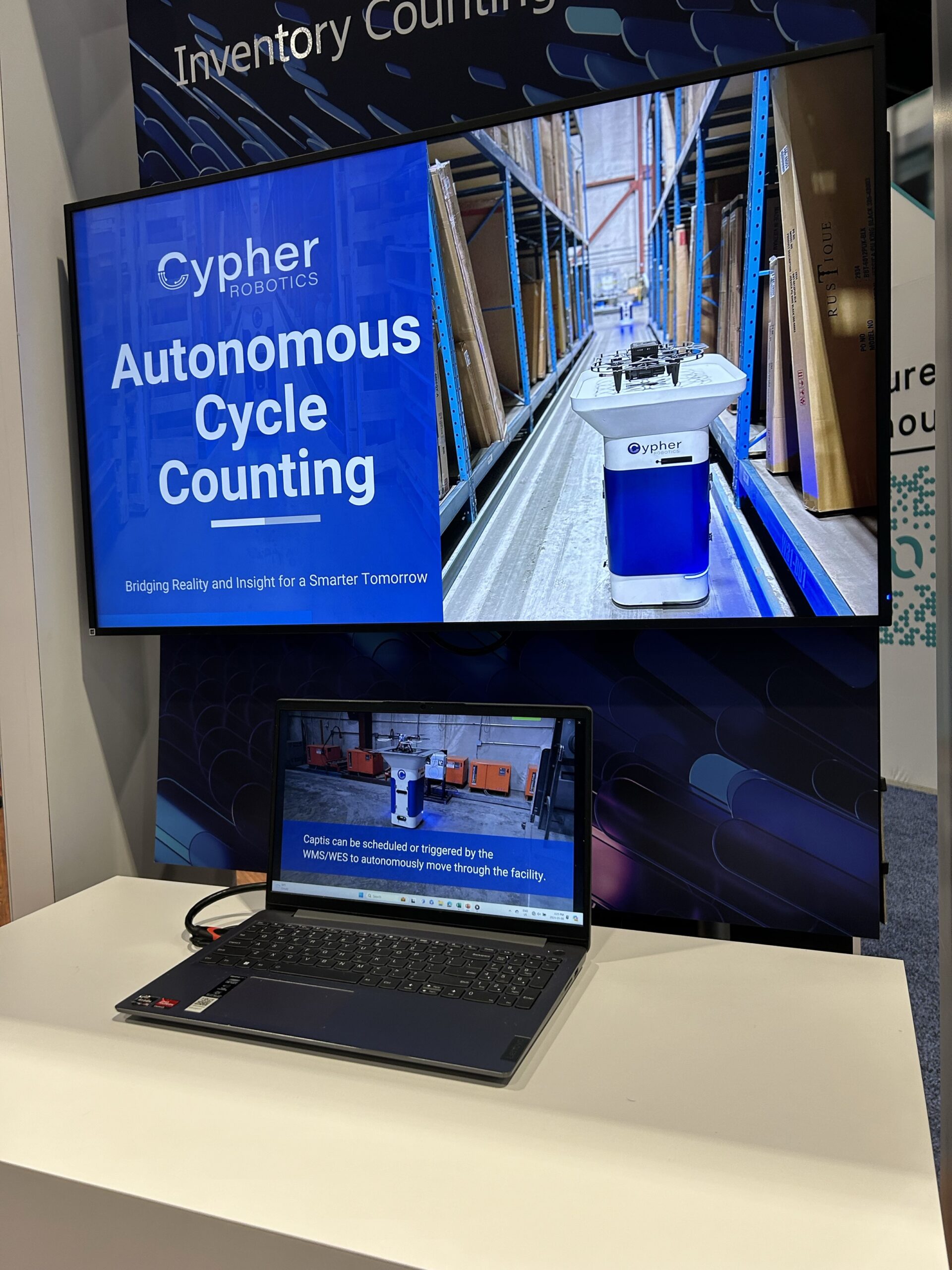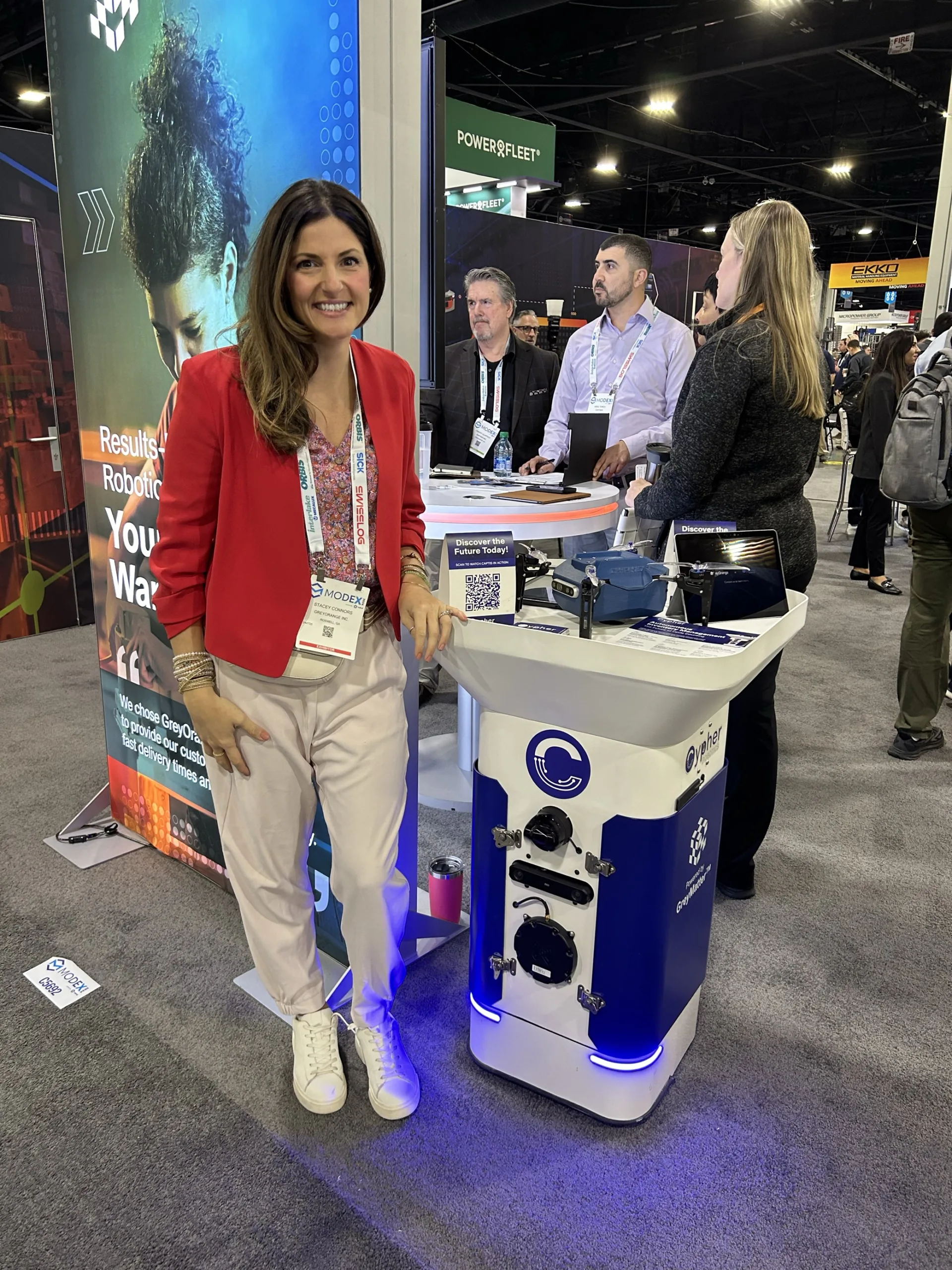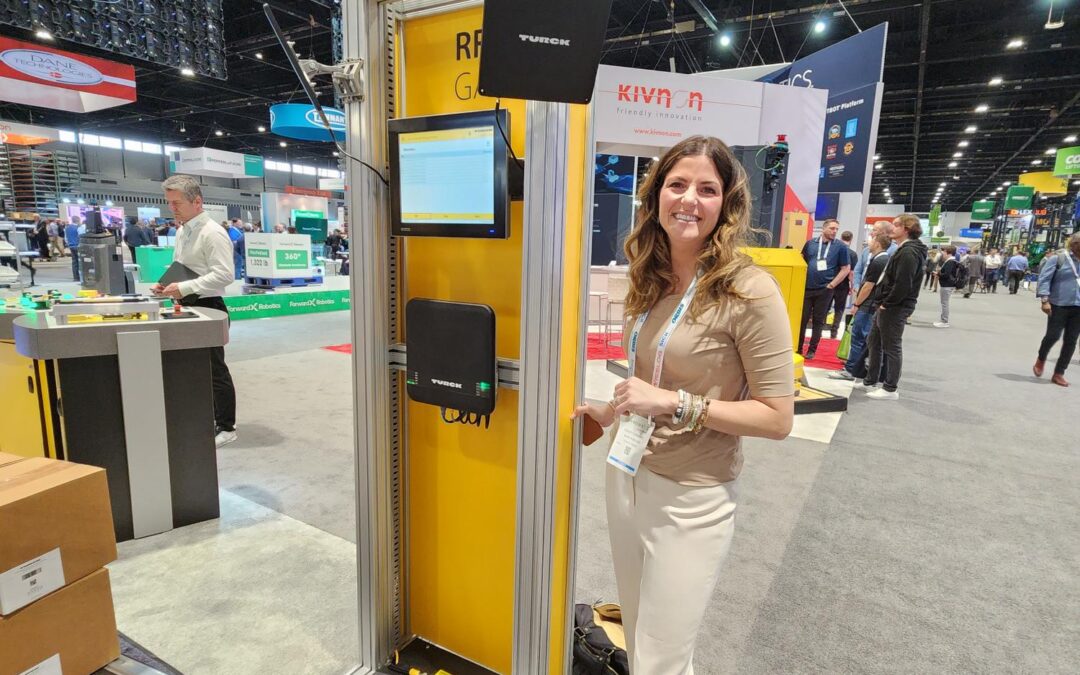
Cypher Robotics and Captis gain attention at Automate 2024
Cypher Robotics was on the road this week. Specifically, the InDro-incubated company was at the big Automate 2024 show in Chicago. It’s North America’s largest robotics and automation event, and a conference that’s geared toward the industrial sector.
Looking for a robot that can pick and place? Move inventory off a truck and into a warehouse? How about an Autonomous Mobile Robot (AMR) capable of lifting and moving even immensely heavy loads? You’ll find all of that – and more – here. There are even manipulators that can mix drinks or make you a fine cappuccino. It’s a showcase for the future (and even the present) of everything from manufacturing to the restaurant space. And it’s all in one place.
This short video provides a pretty good overview. Trust us, there’s a lot of robotics at this show.
CYPHER ROBOTICS AND CAPTIS
If you follow the news from InDro on a regular basis (and who doesn’t?), you’ll likely recognise the Cypher Robotics name. The Ottawa-based company specialises in robotic solutions for cycle counting and inventory management at scale. InDro Robotics has an incubation agreement with Cypher Robotics, and assisted in the development and testing of its signature launch product – Captis.
Captis is a system that integrates an autonomous ground robot with a drone that’s attached to the base with a tether. That tether provides power for the drone and handles data between the drone and the ground robot. As the robot navigates even narrow warehouse aisles, the drone ascends to the various levels of stock on the shelves. That Robot Operating System- (ROS) based drone then scans any and all codes (it’s code-agnostic) on products as the robot works its way forward.
And the data? It’s instantly integrated into a company’s existing Warehouse Management System (WMS), WCS (Warehouse Control System) and WES (Warehouse Execution System) software. The power storage in the Captis base means autonomous missions can last up to five hours before the system returns to home for wireless recharging. This is a huge differentiator from solutions that count stock with a drone alone, since flight times are limited.
What’s more, Captis is also capable of autonomous RFID scanning, with the same data instantly loaded into those same management systems. So you can actually set Captis free on a showroom floor and it will find its way around using its own brains and sensors – all while counting stock.
“Operations managers and pretty much everyone on the floor understands how important it is for inventory to be accurate in their Warehouse Management System,” explains Stacey Connors, InDro’s Head of Strategic Initiatives. She was at Automate 2024 on behalf of Cypher Robotics.
“Organizations that want to make the right business decisions quickly need to be empowered with the data of what inventory they have on hand at any given time so they can pull quick triggers. ‘How much do we have and where is it? Do we want to sell product X to a reseller or distributor?’ Inventory accuracy and data are invaluable in making these decisions quickly,” says Connors.
PARTNERS
Already, Cypher Robotics has forged some powerful partnerships in the industry. It has teamed up with AI fulfilment leaders GreyOrange, global telecommunications innovator Ericsson, and a leading Canadian retailer with several hundred retail locations across the country. (In fact, much of the testing and hardening of the Captis system took place in one of that partner’s massive warehouses.)
Cypher Robotics has also quickly gained attention. When Captis was displayed at the big Modex convention earlier this year, it gained significant buzz – and was even covered by the likes of TechCrunch. That’s not surprising, since Modex is a convention that focusses on automation within the supply chain. Though Automate 2024 had a broader focus, Captis once again attracted a lot of interest. Cypher Robotics was invited by Ericsson to share its display, which focussed on a wide range of robotic and IoT solutions that operate over 5G or private 5G networks – which Ericsson supplies. (Captis can also operate and transfer data over secure WiFi.)

COMPLEX SIMPLICITY
The appeal of Captis is simple: It’s hands-free and highly accurate. It literally goes about and does its cycle counting or RFID scans on its own, working shifts of up to five hours before recharging. Most warehouses still rely on manual solutions, sending people out with hand-scanners to carry out what is a pretty dull and even potentially dangerous task. (Think of how high some of those warehouse stacks are.)
Attrition rates are high, because human beings get bored of highly repetitive tasks, especially if they’re intrinsically unrewarding. In one of the cases we looked at, a 1.2 million square foot warehouse that runs 24/7 has a human being scanning full-time on all three shifts, throughout the day and overnight. A single Captis unit can do all of this more efficiently and accurately, allowing those people to find more satisfying or meaningful work.
“It is a mundane job that is hard to keep people in because you train them and three months later they’re tired of counting so they move on. So labour attrition and retention is an issue, and human error in a mundane job is a reality,” explains Connors. “Cypher stands out from all of the solutions because just a single device is needed for even a million square foot warehouse.”
AND THAT’S NOT ALL
The other big feature of Captis is its ability to multi-task. Specifically, it can carry out precision 3D scans of industrial spaces in extraordinary resolution while it’s doing other work. These scans are valuable for planning, monitoring construction or renovations, simulations prior to adopting other technologies – even for creating plans to duplicate an entire facility.
“I’d say half of my conversations at Automate 2024 were around the ability of Captis to capture a precise, digital point cloud of their environment while it’s doing other tasks,” says Connors.
“A theme throughout the entire conference was how critical simulation is prior to or during the assessment or adoption of a new technology. And in order to have an accurate simulation, you need an accurate representation of the environment. Captis provides this.”
Before we wrap up, it’s worth mentioning that while the tethered drone and extraordinary run-times are key components of this system, some of the most complex magic is due to the robot’s autonomy stack. With its proprietary combination of hardware and software, Captis can be placed in a completely unfamiliar, GPS-denied environment and still get the job done.
“The secret sauce of our total solution is absolutely the embedded autonomy,” says Connors.
Below: Stacey Connors with Captis at the Modex show

INDRO’S TAKE
Automate 2024 is an important conference, showcasing the cutting-edge in industrial robotics right across the sector. It was the perfect venue to let interested parties know about Cypher Robotics and its Captis solution. It was also, yet again, validation of the Cypher Robotics value proposition and business plan.
“It’s great to see the excitement continue to build around Captis,” says Connors. “We’re grateful to our partners Ericsson for inviting us to display alongside them, and there’s no doubt 5G and private networks will play a role in this product’s future.”
And that future? It’s now.
“Cypher Robotics has tested and hardened its technology, and the company will soon be shipping its first orders.”
Interested in learning more? You can contact the Cypher Robotics team here.





